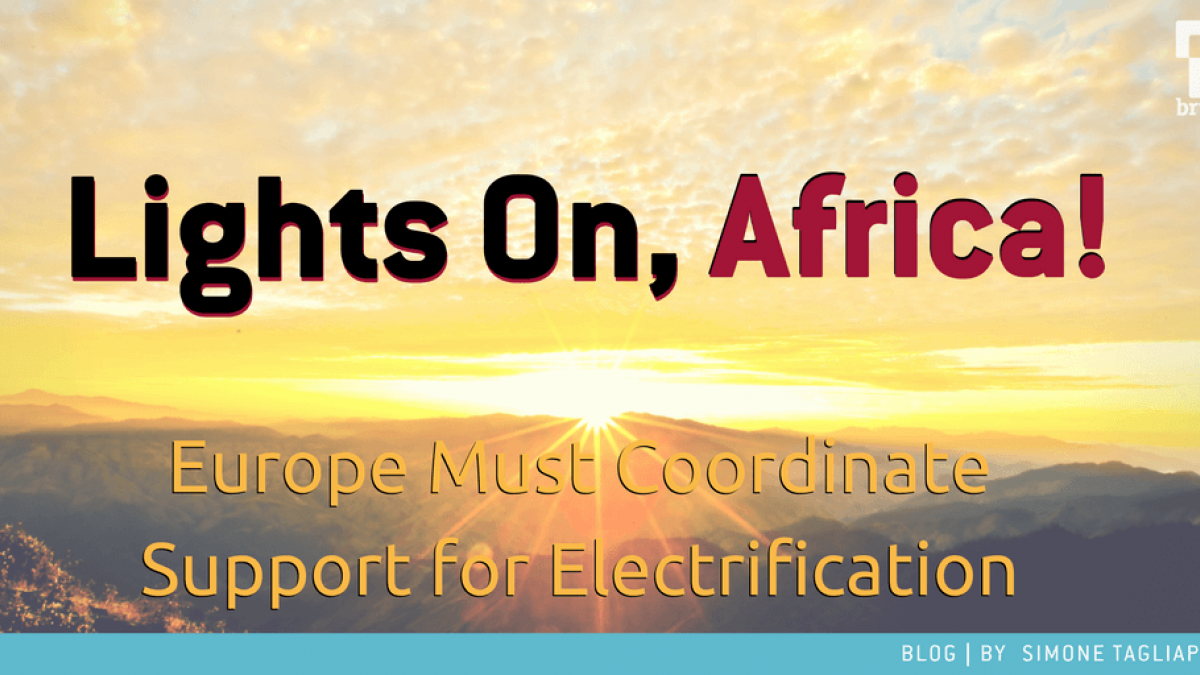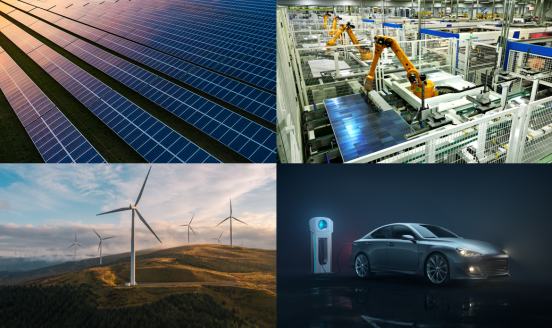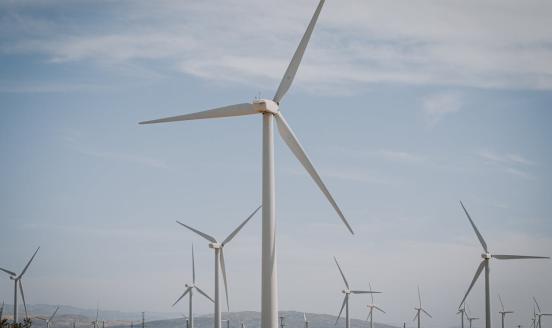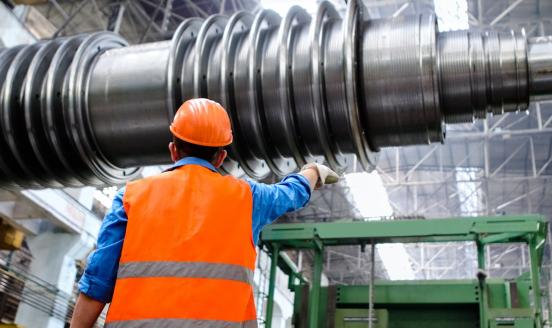Lights on, Africa! Europe must coordinate support for electrification
Patchy access to electricity remains a major challenge for sub-Saharan Africa's economic development. The EU and its member states have many programme

This blog summarises the arguments of a recent paper by the author:
Electrifying Africa: how to make Europe’s contribution count
Electricity is at the heart of modern life, and electric power already reaches the vast majority of households around the world. Only one region stands out: less than a third of the sub-Saharan population has access to electricity. Not only does this massively impact productivity, it also leads to around 600,000 premature deaths each year through household air pollution resulting from the use of polluting fuels for cooking and lighting. Electrification is one of sub-Saharan Africa’s most pressing socio-economic challenges.
Solving this issue is a fundamental prerequisite for unleashing sub-Saharan Africa’s economic potential. Given the magnitude of the challenge, only a joint effort where sub-Saharan African countries work together with international partners can offer a solution. But Europe’s contributions are confused and inefficient, while China and the USA forge ahead. In a new paper, I argue for an EU-coordinated approach to maximise the impact of European funding.
Sub-Saharan African countries should lead this process, and they need to act first. They should reform the governance of their energy sectors, in particular by reforming their generally inefficient state-owned electricity utilities, and by phasing-out market-distorting energy subsidies. Without such reforms, international investment will never scale-up across sub-Saharan Africa.
International partners in both the public and private sectors must also play their role in facilitating sub-Saharan Africa’s energy transformation. In particular, they should support the electrification of rural areas, where three-fifths of the sub-Saharan African population lives. International government support is especially important, as it can “crowd in” private investment, most notably through innovative public-private partnerships.
China and the United States are already supporting electrification in sub-Saharan Africa. China has invested substantially in large-scale electricity projects, while the US has put in place a comprehensive initiative - “Power Africa” - to scale-up electrification, particularly in rural areas, through public-private partnerships.
The EU and its member states, on the other hand, have created a myriad of fragmented initiatives to promote electrification in sub-Saharan Africa. This limits Europe’s potential leverage for crowding in private investment and stimulating energy sector reforms in sub-Saharan African countries. In this labyrinthine network of initiatives, understanding who is doing what is challenging even from an EU perspective (see Table 1). So, imagine how it looks from a sub-Saharan African perspective, when other international counterparts, such as China or the US, present themselves in a far more coherent way.
Europe’s current fragmented system creates overlaps, inefficiencies and, on the whole, higher transaction costs. European taxpayers’ money would be far better spent if channelled through a single facility, aimed at coordinating the initiatives of European institutions and EU countries through a unique platform. This can be done in three steps:
Step 1: Create the ‘EU Electrify Africa Hotspot’ by coordinating European Commission and EIB programmes
The first step in coordinating Europe’s support programmes for electrification in sub-Saharan Africa should be taken by the EU institutions. The European Commission and the EIB should progressively channel existing and prospective programmes related to electrification in sub-Saharan Africa through a common facility. Instead of creating additional initiatives (as recently done with the launch of the EU External Investment Plan), the EU should first put its house in order and rationalise its activities in the field. This would allow a more efficient use of European taxpayers’ money, and also allow greater impact in sub-Saharan Africa – due to greater scale and visibility. This new body might be named the ‘EU Electrify Africa Hotspot’.
Step 2: Attract EU member states to join the ‘EU Electrify Africa Hotspot’
Once the programmes of EU institutions are being coordinated through the ‘EU Electrify Africa Hotspot’, we should aim to attract EU countries’ national programmes on a voluntarily basis. EU countries should be able to see clear added value from channelling their funds through a joint scheme for two main reasons: increased leverage in the field and reduction of transaction costs.
Step 3: Fully leveraging the potential of the ‘EU Electrify Africa Hotspot’
The potential of the ‘EU Electrify Africa Hotspot’ would be fully realised once the various participants start to work on joint projects. In other words, the end goal should be to move from a clearing house for funding to a pooling of financial resources. These funds would be used to create public-private partnerships, encouraging private sector investment in the sub-Saharan African electricity sector. A key focus should be micro and off-grid solutions for rural electrification, as this is where the greatest need exists. Moreover, by working together EU institutions and member states could stimulate energy sector reforms, such as reform of utilities and energy subsidies. This would, in turn, further attract private investment. It is this virtuous circle that the ‘EU Electrify Africa Hotspot’ should ultimately seek to create.
At the moment the USA and China are streets ahead of the EU in supporting sub-Saharan Africa to deliver electricity to citizens. Coordination is the only way Europe can make a significant contribution, both in terms of crowding in private investment and in terms of stimulating energy sector reforms in sub-Saharan African countries. It is in the interest of both European and African societies for this money to be spent effectively. Doing so via an ‘EU Electrify Africa Hotspot’ could represent a pragmatic solution to move ahead.



